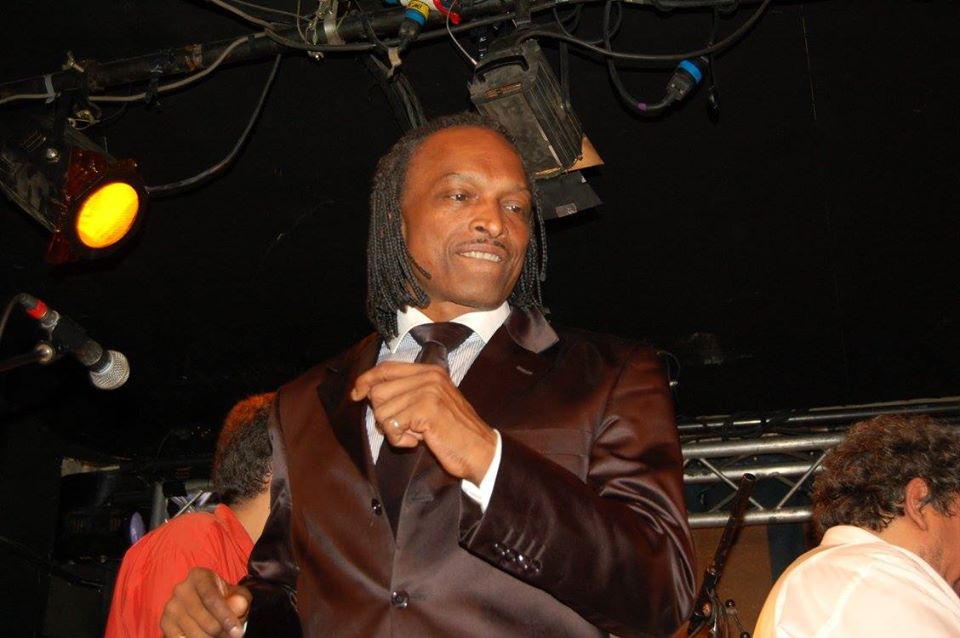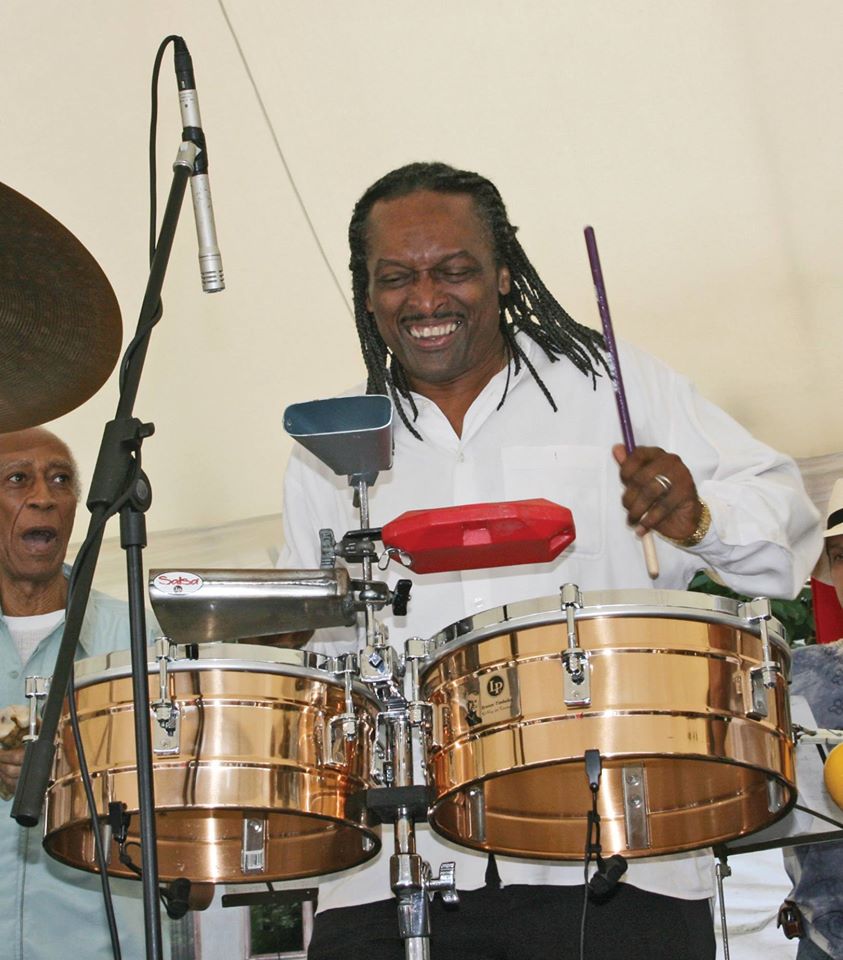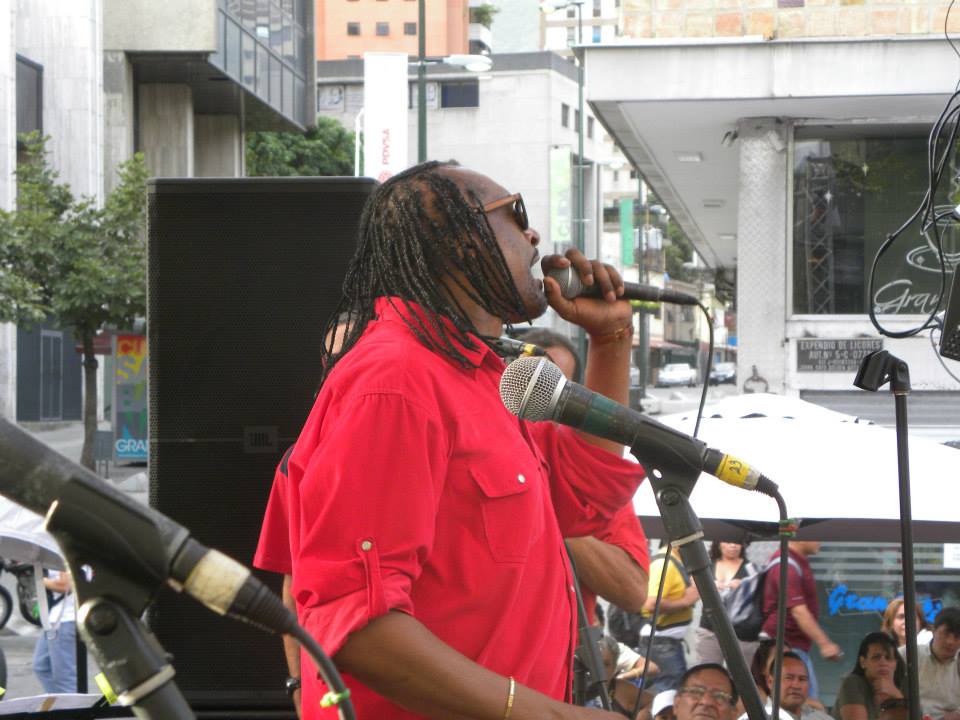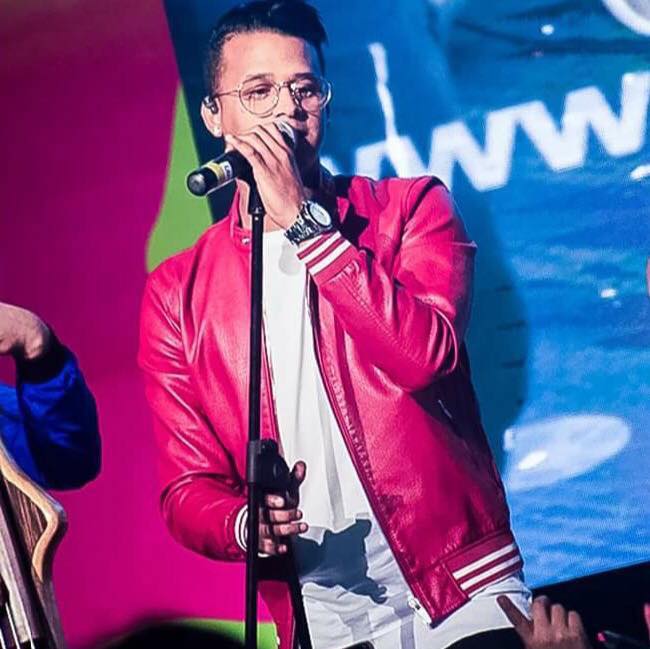Marco Toro – How it all began
Music knows no barriers in cultural and linguistic terms. Proof of this is drummer and percussionist Marco Toro’s amazing trajectory, who was born in Caracas, Venezuela, and whose musical roots are embedded in the rhythms and culture of that country.
Five years ago, the artist launched his latest music work based on what we know as Latin jazz, which is a blend of rhythms and sounds that transport its hearers to certain parts of Africa and South America.

This percussionist always flaunts his versatility by interacting with first-class musicians from all latitudes, with whom he has created certain musical productions. In addition to that, he can play the drums, timbales, the conga, the big drum, the maracas, among others.
In 2004, Toro released his solo project called Marco Toro y su Ensamble, with which he began to venture into rhythms such as joropo, salsa and rock.
We were pleased to converse with him on his musical history told by himself.
You have a very interesting musical and personal story. We would like to know a little more about your beginnings. When did you decide you wanted to make a career out of this? How were your first steps into the musical world and what inspired you to accomplish what you have done today?
Well, my beginnings were with my dad, may he rest in peace. I started by playing the maracas with him. He sang and played the cuatro. I sang llanera music in bands and trios like Los Panchos. I sang serenades, I was a serenader within the Guarenas blocks and played llanera music with a hat Pelo É Guama since I was 9, which I did not like when I was little kid, but anyway I did it.
After that, I began taking drum lessons when I was 14 or 15 years old with a drummer friend named Ildemaro, and afterwards in Caracas, I also took a couple of classes with the Daiquiri band’s drummer in Hemisferio Musical, which was a school with music store in Sabana Grande (area of Caracas) with a teacher named José Matos.
Finally, I also took lessons with Willy Diaz who is a drummer in Caracas and with whom I made recordings and other things.
Then from there, I was hitting on rock. Let’s say, I knew much about salsa from my mother and I don’t know if the new generation is aware, but there was what we used to call matinees, where I danced salsa while at home, I listened to rock. That’s where this mix comes from, but overall I have always liked those musical styles and it shows at what I do.
In Guarenas there was a group called Estandard and we started playing original music with musicians from Caracas and Guarenas, with whom we used to mix these two styles (salsa and rock). We mixed heavy metal with Latin music and rehearsed in a studio in Caño Amarillo (another area in Caracas), which was equipped with many Latin instruments such as the conga or the timbales, and that was how the whole mixing of the Latin with rock began.
We started doing very well, so much so that we recorded a demo and ended up playing with Desorden Público, which at the time was one of the best bands.
We played with them in Mata de Coco and the Poliedro of Caracas. The band was getting a lot of swing until, like every young man with dreams, the time came when we felt we had to head to new directions, so we decided to go to the Old Continent and bring our savings here.
When we finally got to Europe, many doors were opened for us because this was a style that was not being done anywhere in the world at the time. So, through the Dutch ministry of culture, began to appear the first recording deals and we got a chance to play on local television networks.
A lot of people did not even know where Venezuela was, so we did really well and started touring Europe. I got a little off track there (laugh), but that is what the emotion of talking is about.
It is a very interesting mix of rhythms without a doubt. You commented to us that you started a rock band, took salsa classes and listened to rock at home.
From here arises what is known as Latin jazz or sambojazz, could you tell us a bit about this interesting mix made in your career? How do you think your Venezuelan roots influenced your music along with all that you have learned abroad?
The Venezuelan roots have always been in me. Also, I have a regionalist family. My parents and my uncles always bet on Venezuela, so I grew up with this picture in my mind even though I listened to foreign music. Thankfully I have always been open to any kind of rhythms, but my roots became to grow when I played Christmas bonuses, aguinaldos and Afro-Venezuelan drums in the block where I lived. By the way, I lived very close to Curiepe (a Venezuelan town in the state of Miranda where drums and Afro-Caribbean music are very common).
More than once, I went to Curiepe (another Venezuelan town in the State of Miranda) rumbas to celebrate the festival San Juan, so this Afro-Venezuelan part was always very present.
When I got to Europe, I wanted to learn more about Afro-Venezuelan and Afro-Caribbean drums in general. In Venezuela, drums were a mere pastime, but here we had to explain the origin of our music, so we had to learn many more about these instruments.
After that, I realized that our music was different and very original to each other’s ears. When there was talk of Caribbean music, you just heard the names of Cuba and Brazil, but things have changed because Europeans have become much more open to new rhythms and the large number of Venezuelan musicians who have left the country and brought Venezuelan culture to a new level. That has made Venezuelan music more present and many musicians, artists, dancing painters have been in this. Everyone doing their bit.

Everything what you told us is very interesting. In that case, can you tell us about the change in attitude of Europeans toward all those Venezuelan rhythms and the vision they have of Latin talent compared to a few years ago?
If you want to enter, you need to get it nice and slow. Venezuelan music have been accepted immediately by Europeans, but they feel like it is something new by listening.
That does make them pay a little more attention. That is like saying that arepa vendors should make them thinner for the European, since they don’t like it too thick. Thus, you should turn this around to introduce our music so people can enjoy it, but we have only been able to form music groups in December and the majority of attendees are Venezuelans and their Dutch partners.
Our music has not become as internationalized as much as salsa. When you go to a place where you dance salsa, the band can come from anywhere and people will always dance it. We have not yet succeeded in making people dance to Venezuelan drums in the same way. We have only participated in festivals where all kinds of music are played, but we are working on it.
And so we go on little by little. The important thing about Venezuelan musicians is that we have always been influenced by all kinds of Afro-Caribbean music, which makes a big difference. The other countries do not play our music, which makes make a big difference. In addition, there are always Venezuelan musicians in almost all orchestras. I mean, we have entered our music thanks to our musical aperture and our participation in any genre.
I personally don’t like labels, I’m a musician and if there is anything I can do in any genre I will do so without any problem. I am not one to take salsa or any musical style as a religion. I am very open to playing with the Dutch, the gringos and whoever. I love participating with different nationalities because that is where learning occurs.
Everything you have told us is very interesting. Certainly, This set of mixtures you use is what has made your work so interesting, you are not afraid of anything. You also told us that you have to adapt your rhythms to the European’s ear to make it more enjoyable.
Could you tell us how you have made Europeans to get interested in Venezuelan music and what arrangements have you made at instrumental level to make it more enjoyable to their ears the first time they hear them?
I’m going to give you an example. I am performing with a group called Drums United with which I have toured the world. With them I included Curiepe’s drums culo e´puya and have a show where I play that instrument. What do I do? I play that instrument first for people to hear it and at the same time one of the members explains to them how these drums sound, where they come from, their roots, how they got there, among other things.
After playing them, I sing the most popular music with those drums in the background and people really get into it. My way of singing is so easy for the European who come to party with those drums. I also sing with the attendees and throw a party with them, I think it is the best way to interact with the public when they do not know our music.
Also, I have made compositions in which we do not use the drums that are typical in Venezuela. We use a grenadier and a snare drum that are known around these parts. One of my own compositions is called Reina Pepiada (arepa with chicken and avocado salad which name means ¨curvy queen¨ in honor of Susana Dujim, the first Venezuelan international beauty queen) and the other is Guasacaca (savory sauce very similar to guacamole).
When our songs come up, people ask the meaning of the names mean, and that is where we need to explain this. In my case, music is closely linked to food, and so you start to raise public interest.
In that case, in what way has music helped to put Venezuela and other Latin American countries on the map after listening to these rhythms?
Venezuela has become known for all the Venezuelan musicians who are in these parts. Each of us, within his style, has done that. La India came here and we joined her. We were rehearsing without her and when she came in she said she knows that there are Venezuelans on the team and asked who they are.
We were six Venezuelans and she said she had nothing to worry about because everything will be fine. That is the explanation of how Venezuelans in Europe and elsewhere have earned a reputation for discipline and effort. That has helped us turn the attention of the European public to what we are doing.
For instance, in New York there is a group of Venezuelans who are an emblem. I can name Luisito Quintero, Roberto Quintero, Raúl Agrá, and some others. Here is also a tremendous crowd putting on the table their best effort. There is Orlando Poleo in France, Javier Plaza in Germany, and many others. Here’s a crowd doing his best.
What we do have is a short break for the pandemic. Well, in my case, I had a tour with some saxophonists, but all of this year was cancelled. We are all waiting for things to go back to normal to move forward. Meanwhile, I wrote two new songs during the pandemic. Everyone has been recording material at home and sending us their files. There was even a song that Marcial Isturiz sang from Colombia and sent me the files, so I worked on the mixes and turned this around.

Covid-19 and adaptation to the new normal
In view of the fact that all artists had to reinvent themselves because of all this situation caused by COVID-19, in what way have you been impacted, both professionally and personally?
I have been touring, playing in all places, and suddenly the front door gets slammed in your face. And it happens to be, like, what now? Not just for myself, but for many people as the world was surprised by this and now we have to learn to live with it.
What else are we going to do? You have to look after yourself and turn this around. In spite of everything, I am not complaining because I have noticed that I have sold many records. I have sent records from here to the United States and other parts. At a certain point, the live shows have been cancelled, but music is still sold. Additionally, there is a couple of interview there and over there.
In that case, what would you recommend to all new generations of musicians?
What I recommend is that the new generations is that they should have discipline. I bethink that this is the most indispensable in the music world and when I talk about discipline I mean the study of your instrument to try to be better. For example, you have to be on time or earlier for the band plays or practices. Please call if you have a problem. Everything that has to do with discipline is important because I have seen many excellent musicians who have failed as they have not had discipline. So these is paramount to succeed.
So, as we confront this new normal, what advice can you give to these new generations at the suspension of concerts are going to be canceled for a long time? Given this new scenario, what would you advise those who are starting in the music world?
Well, I recommend them remain positive and use the brain to get what they want. If one door has closed on us, one will be open up. However bad the situation is, one can always invent things. There are many musicians who are doing online concerts. So they have their account, and if people like their music, they can put some money in their accounts. I think it is fabulous. Other people are doing other things. There are people that play in front of their homes and those who walk around can give them some money too. A lot is happening here until then, you have to be positive.
When a person is complaining all the time, he is just adding negativity upon himself, making doors harder to open. In my case, I just made two new songs, one is called Mi casa (My house in Spanish), which is a parrandón (musical genre typical in Christmas) with Afro-Venezuelan drums and is dedicated to Venezuela. The other is called Sólo un poco. I have a little studio and from where I record and send material to other places. That is how I held mi own and made my productions here from the house.
My message is that. We have to move forward. When I came to Europe, I arrived with a small suitcase without knowing where to go and my English was so bad that I could not make myself clear. I got in touch with the culture of this country and met people. However, I have not lost touch with Venezuela, and what is more, I go every year. In 2018, I was playing at La Casa del Artista, La Rumba Latina in Guatire and elsewhere.
A final message to the public of International Salsa Magazine and your social networks.
My website is www.toro-ensamble.com, you can follow me on my Facebook Marco Toro y su Ensamble and you can follow me on Instagram as @Sambojazz
As a final message, we have to be positive and think about the good times to come. We have to be patient, wear a mask and take care of ourself because this is not a game. And most of all, we have to take care of elders.
I tell young people to listen to your elders. Listen to old music that is very important and then listen to modern music because everything has its roots and starts at a certain point.












